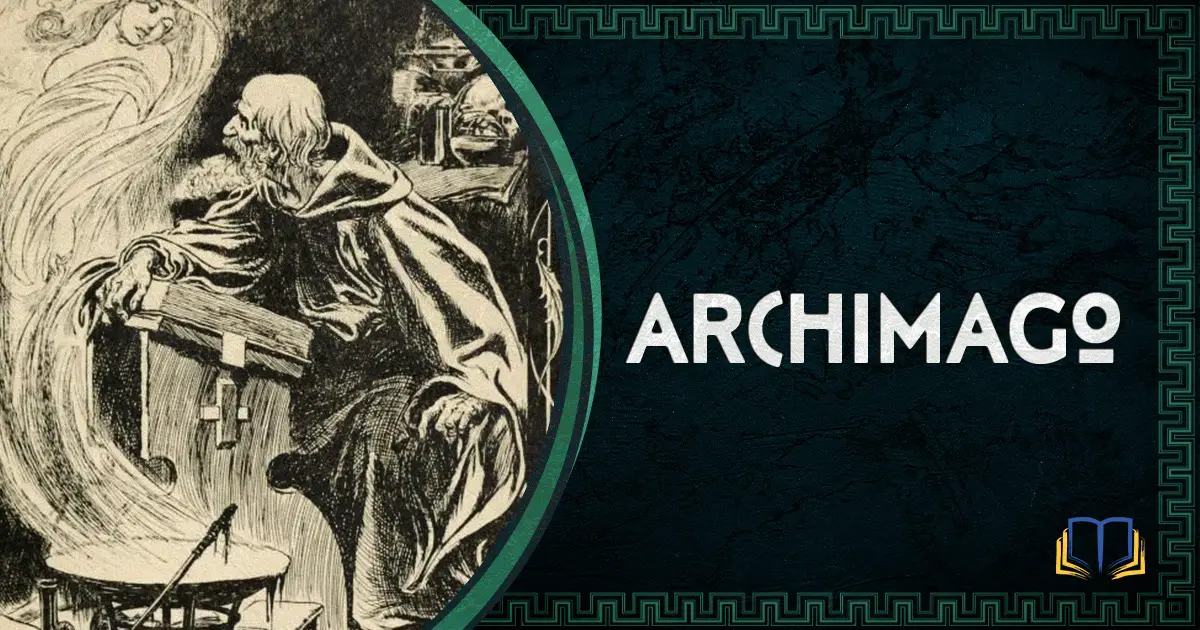Archimago is a sorcerer in The Faerie Queene, one who ends up being the arch-nemesis of the Redcrosse knight and Una.
He appears multiple times throughout book 1, and a handful of times throughout the other books.
His main goal seems to be tempting the Redcrosse knight into committing lustful acts, and when this fails, convincing St. George that Una has been unfaithful to him.
He later takes the form of St. George to accompany Una for some time, unbeknownst to her.
His entire existence seems devoted to deceiving and misleading our main characters. His final act in book one is to try and convince Una’s parents that the Redcrosse knight is already wed, so that he will not marry Una. Thankfully, everyone sees past this, and Archimago is imprisoned.
The Etymology and Progression of Archimago’s Name
If Archimago’s name sounds familiar, it’s because this is the origin of the word “archmage“.
His name is originally a compounding of the two Greek words: Archon meeting ruler, and Magos meaning magician or wizard.
Occasionally, throughout the text of the Faerie Queene, Edmund Spenser would refer to him as Archimage, though this is meant to be another version of his name, and not a title.
However, the word “Archimage” was picked up by Percy Shelley in his “Letter to Maria Gisborne” (Shelley was a big fan of Spenser), as a synonym for wizard, and was later adapted by Ursula K Le Guin into the form we recognize today: archmage.
Pretty cool, huh?
What Does Archimago Represent in the Faerie Queene?
As Archimago is constantly trying to deceive and turn the faithful away from their path, he is clearly a negative influence.
Archimago frequently appears as someone trustworthy, first as a Reverend Hermit, and later as the Redcrosse knight. This shows a level of hypocrisy and continued deception, painting himself as one thing, when in fact he is another.
This is the view in which Edmund Spenser saw the Catholic Church, a highly hypocritical organization that sought to lead people astray.
Archimago is also thought to represent temptation, a much more general issue.
See our complete list of Arthurian characters for more entries like this one.
Arthurian Bibliography
- Norris Lacy, Geoffrey Ashe, Debra Mancoff – The Arthurian Handbook (Second Edition)
- Alan Lupack – The Oxford Guide to Arthurian Literature and Legend
- Ronan Coghlan – The Illustrated Encyclopaedia of Arthurian Legends
- Anonymous – Lancelot-Grail, the French Vulgate
- Sir Thomas Malory – Le Morte d’Arthur
See also my ever-expanding list of primary and secondary sources.



